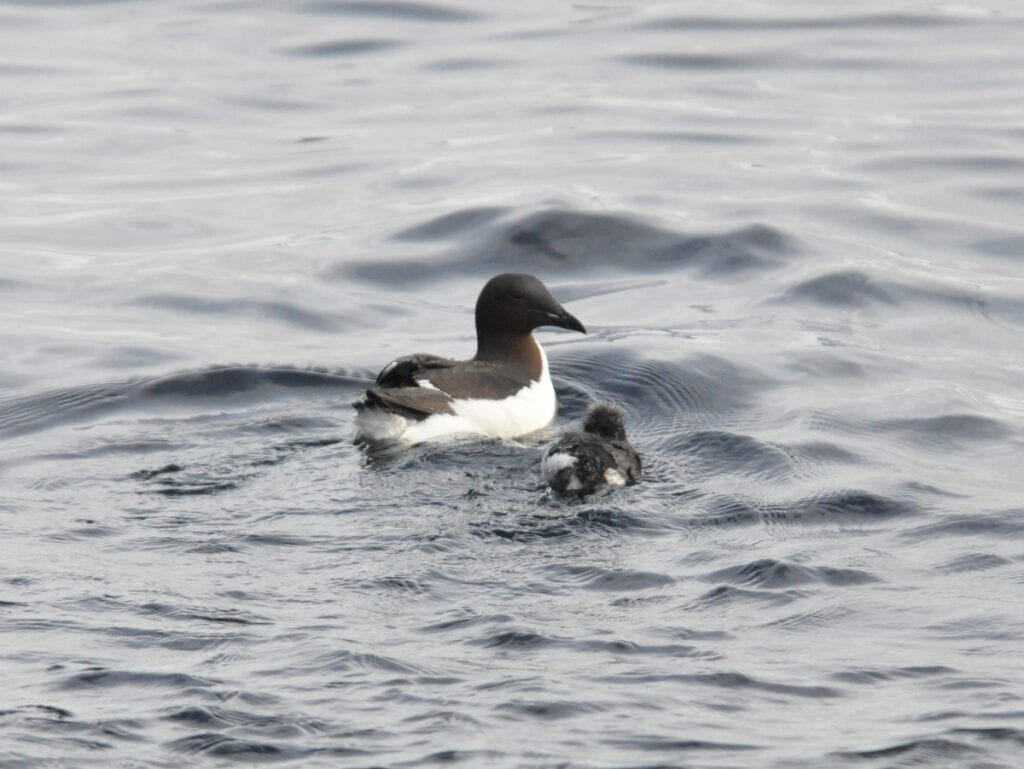Wintering areas are important
A recent study now provides an overview of the migration routes and wintering areas of adult Brünnich’s guillemots breeding in the North Atlantic region. Utilizing all existing data from light sensor tags on Brünnich’s guillemots from 2007 to 2013, the study reveals migration strategies for Brünnich’s guillemots that are of importance for the conservation work for this Arctic species.
In order to manage pelagic seabird populations correctly and effectively, it is cruical to know the migration paths and wintering areas of the different populations outside the breeding season. Brünnich’s guillemot populations in the North Atlantic Ocean and Barents Sea are decreasing, and the species is facing several threats: oil spills, bycatch, hunting and oceanic change influencing prey availability are the most important ones. The methods used in mapping migration routes for birds have developed extensively in the recent decades, and traditional bird bands are very often supplemented with geolocation or geo light sensors, so-called GLS tags. An international group of researchers have compiled their data from different GLS studies on Brünnich’s guillemots breeding in the North Atlantic, the Barents Sea and North America in order to build a complete overview of the migration paths for the different populations of the species.
Read the article:
The results form the work shows that the most important wintering areas for Brünnich’s guillemots are off Newfoundland and Labrador, along the west coast of Greenland and around Iceland. There was strong correspondence between wintering area and breeding population status: stable populations breeding in Canada and Northwest Greenland wintered mainly off Canada, whereas declining populations from Svalbard and Iceland wintered mainly off West Greenland and around Iceland. In some of the populations, there was a clear tendency for the females to leave the breeding grounds earlier than the males, who stay with the chick in the first period after fledging. The study corroborates earlier discoveries and emphasizes the importance of a coordinated international management effort for migrating seabirds.
Contact person: Hallvard Strøm, Norwegian Polar Institute
